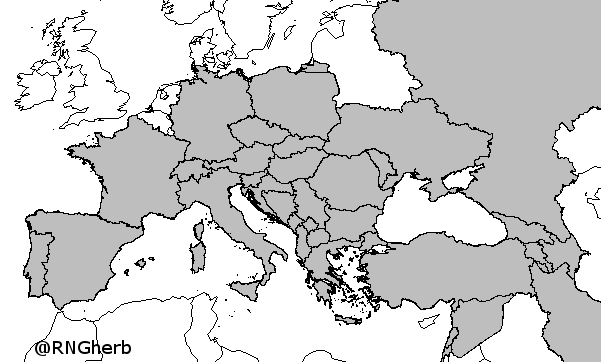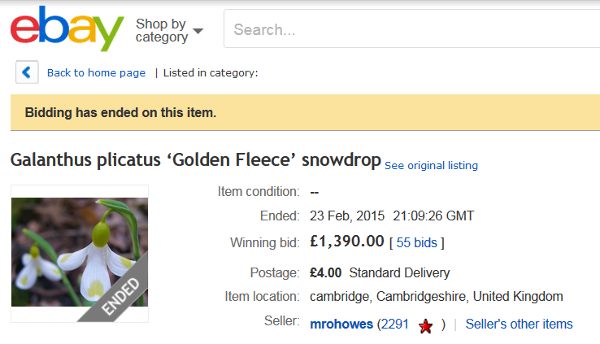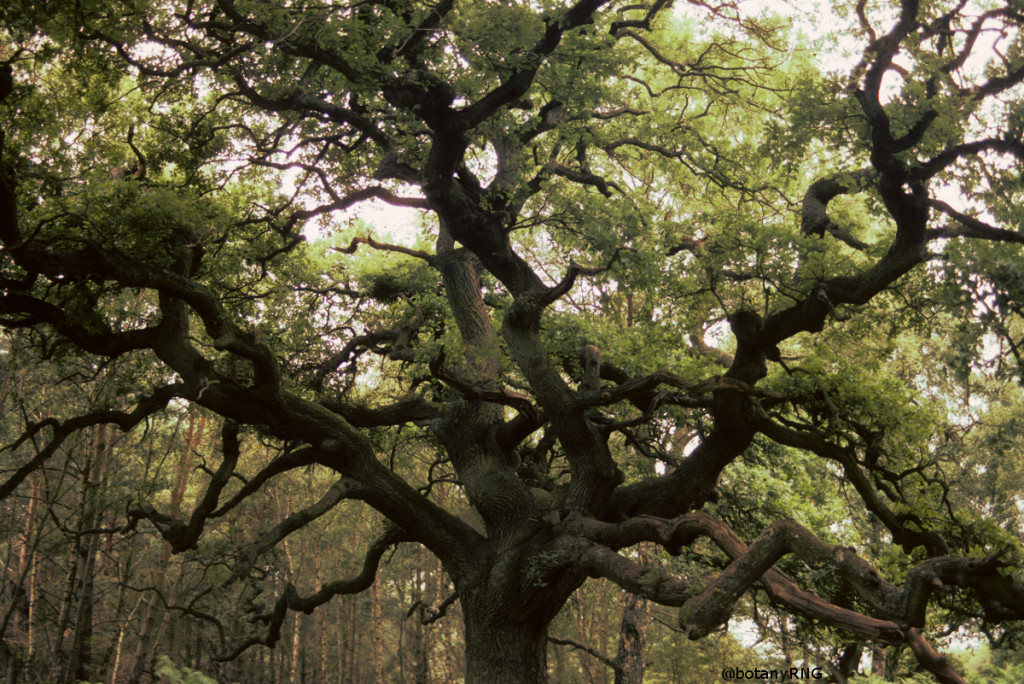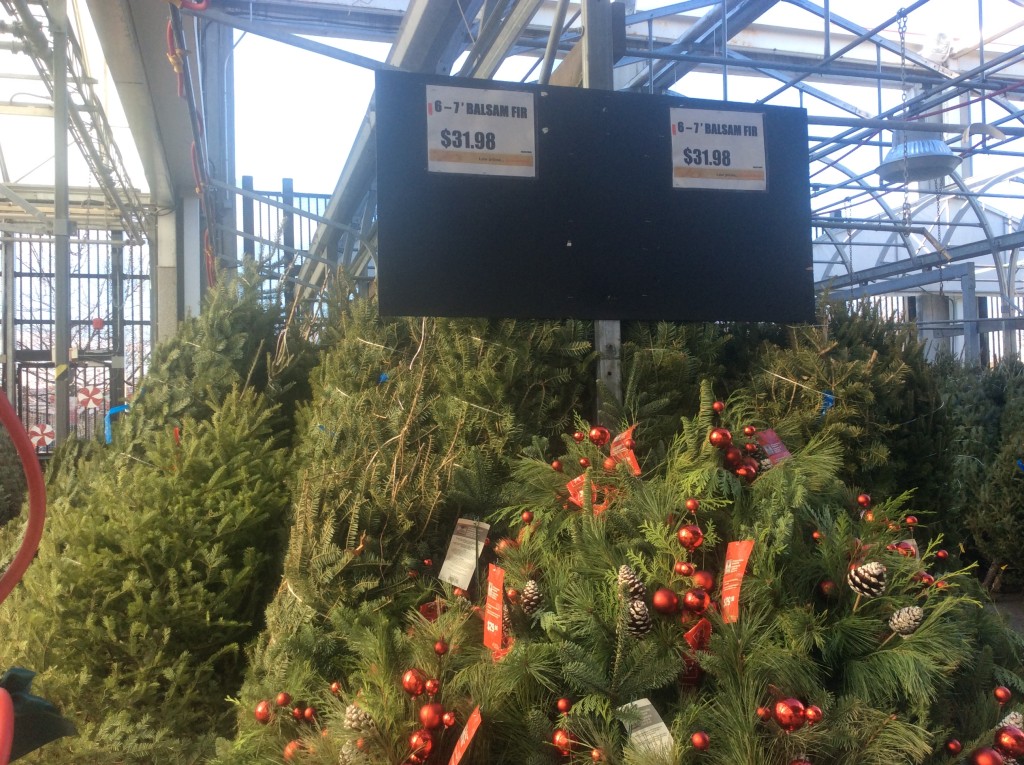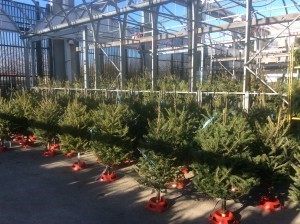Dr M says: I spy tinsel garlands, glass (more likely plastic!) baubles and chocolate calendars of varying quality and naffness, and Rudolph’s red nose almost in sight. And yet it seems only yesterday Dr M was composing and singing the Twelve days of botany and together with his colleague Dr Alastair Culham (@BotanyRNG) invented Advent Botany – 25 inspired nuggets of botanical peace, love and joy posted here and at Culham Research Group and dispersed across the Twittersphere to delight and inform – a veritable botanical Advent Calendar if there ever there was one headed by Niki Simpson’s lovely brand new and bespoke Yew foliage illustration!
This year in the spirit of unabashed botanical inclusivity, Son of Advent Botany (Advent Botany 2015) has been thrown open to the entire global botanical community and each day of Advent 2015 will feature a botanical post by one of the worlds botanists so #AdventBotany and #iamabotanist goes all festive! Scroll down for all previous posts:
Advent Botany 2015, Day 25: Christmas cactus!
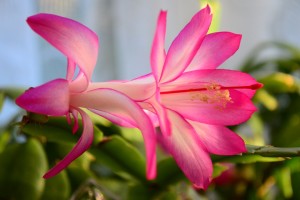 My grandfather grew a huge Christmas cactus which flowered regularly every year. It spent the summers in a shady spot in the garden and the winters indoors away from the frost. It intrigued me because it didn’t look like a cactus – it had no obvious spines and the stems were flat and bright green. However, even if not cactus-like, it certainly flowered over the Christmas period.
My grandfather grew a huge Christmas cactus which flowered regularly every year. It spent the summers in a shady spot in the garden and the winters indoors away from the frost. It intrigued me because it didn’t look like a cactus – it had no obvious spines and the stems were flat and bright green. However, even if not cactus-like, it certainly flowered over the Christmas period.
Now there are a myriad of Christmas cactus cultivars with flowers varying from magenta, through red, orange and yellow to brilliant white. Some of these are a little more difficult to grow than my grandad’s plant but all seem to tolerate modern centrally heated houses with good grace.
Cultivation
Christmas cacti are woodland plants that prefer a semi shaded aspect in the summer, although in a UK winter they will tolerate full sun without harm. They like a humid atmosphere but are intolerant of over wet compost, very much like Moth orchids (Phalaenopsis). They like well drained but moist compost (a proprietary cactus mix or John Innes No 2 with added composted bark work well). They do best if kept in small pots and can be repotted each year (or two) around Easter as they begin growth.
At this time of year a healthy Christmas cactus will be flowering so should be kept watered (the flowers can lose a lot of moisture) but as it finishes it will need a rest and a slightly drier period at around 10-15C. From April the plant comes back into vigorous growth and can be given dilute houseplant fertilizer when watered. After any risk of frost Christmas cacti do well outside providing they can be protected from slugs and snails (which can destroy a plant overnight). By September the new flower buds appear and the plant should be brought into a cool room inside and watered sparingly while the buds develop. Once the buds have developed and the flowers are expanding more water will be needed again. Christmas cacti are readily propagated simply by cutting off a piece of stem with three to four years growth, drying the cut end overnight and planting in a well drained cutting compost (50% grit). Rooting takes three to six weeks.
Christmas cactus – what is it and where is it from?
So far I’ve avoided using a scientific name for the Christmas cactus. That’s with good reason, as a child I knew Christmas cactus as Zygocactus truncatus and Easter cactus as Schlumbergera gaertneri but modern taxonomy based on phylogenetic principles tells me both are now wrong. Christmas cactus is Schlumbergera truncata (or one of its hybrids under the name Schlumbergera x buckleyi) and Easter cactus is Hatiora gaertneri, so both haved moved from one genus to another.
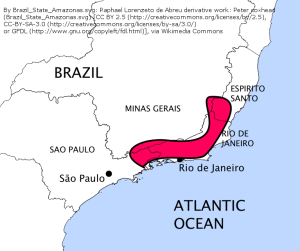 Whichever genus Christmas cactus now belongs to we know it originated in the forests of Eastern Brazil (the Atlantic Forest), a highly threatened series of habitats of great conservation concern. The species grows on rocks and on trees in damp but shallow soil and moss. Although close to the equator, these species are often at high altitude in warm and humid areas that can become quite cold (but rarely freezing) at times. The bright tubular flowers are adapted to hummingbird pollination and not designed to be attractive to humans!
Whichever genus Christmas cactus now belongs to we know it originated in the forests of Eastern Brazil (the Atlantic Forest), a highly threatened series of habitats of great conservation concern. The species grows on rocks and on trees in damp but shallow soil and moss. Although close to the equator, these species are often at high altitude in warm and humid areas that can become quite cold (but rarely freezing) at times. The bright tubular flowers are adapted to hummingbird pollination and not designed to be attractive to humans!
Advent Botany 2015, Day 24: King Protea!
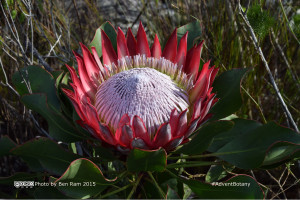 Every year in preparation for Christmas a king from a distant land honours me with its presence. The king of which I speak is a Protea cynaroides, the King Protea, plant that grows in my garden and flowers, virtually on the button, in readiness for Christmas day. I have to say it looks rather out of place in the dull light of North Wales but none the less we anticipate its opening and celebrate it with excitement.
Every year in preparation for Christmas a king from a distant land honours me with its presence. The king of which I speak is a Protea cynaroides, the King Protea, plant that grows in my garden and flowers, virtually on the button, in readiness for Christmas day. I have to say it looks rather out of place in the dull light of North Wales but none the less we anticipate its opening and celebrate it with excitement.
 You may not think of theProteaceae, as being a family of plants associated with this festive season but, whilst they are available all year round as cut flowers the global market for their blooms reaches its peak at Christmas. One retailer states that its sales of bunches of protea increase by up to 500% during Advent (Fortnam, 2015). Of course there is a reason for this; we, here in Britain, are constantly on the look-out for festive flowers to adorn the hallways of our decorated homes to welcome our guests. The red and green bracts of the Golden cone-bushes Leucadendron‘Safari Sunset’ and L. laureolum amongst the crown-like blooms of Protea cynaroides not only look Christmassy but give an air of glamorous opulence that us Brit’s only really put on show at this time of year.
You may not think of theProteaceae, as being a family of plants associated with this festive season but, whilst they are available all year round as cut flowers the global market for their blooms reaches its peak at Christmas. One retailer states that its sales of bunches of protea increase by up to 500% during Advent (Fortnam, 2015). Of course there is a reason for this; we, here in Britain, are constantly on the look-out for festive flowers to adorn the hallways of our decorated homes to welcome our guests. The red and green bracts of the Golden cone-bushes Leucadendron‘Safari Sunset’ and L. laureolum amongst the crown-like blooms of Protea cynaroides not only look Christmassy but give an air of glamorous opulence that us Brit’s only really put on show at this time of year.
Read much more about King Protea at Culham Research Group!
Advent Botany 2015, Day 23: The night of the radishes!
By Emma Cooper
 When you think about Christmas plants you probably think about hollyand ivy, possibly Christmas trees and poinsettias, and maybe even Brussels sprouts and parsnips. But I bet you don’t think about radishes. And yet, the humble radish (Raphanus sativus) plays an important role in the Christmas festivities in Oaxaca, Mexico.
When you think about Christmas plants you probably think about hollyand ivy, possibly Christmas trees and poinsettias, and maybe even Brussels sprouts and parsnips. But I bet you don’t think about radishes. And yet, the humble radish (Raphanus sativus) plays an important role in the Christmas festivities in Oaxaca, Mexico.
Every year, on December 23rd, they have a Christmas night market. This was traditionally when people bought the food items they would need for Christmas, but since 1897 it has been a very special event – La Noche de las Rábanos, the night of the radishes.
The townspeople of Oaxaca have developed radish carving into a fine art, and the night market has developed into a fiesta during which more than a hundred radish tableaux are displayed, with everything from the Nativity to the Last Supper carved into radishes. The best display wins a prize of around… Read more on this extraordinary event at The Unconventional Gardener.
Advent Botany 2015, Day 22: Healing Cinnamon
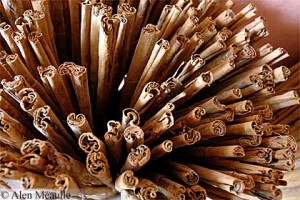 The very representative flavour of warm and sweet Christmas comes from the tropics. Yes, “True Cinnamon” is native to Sri Lanka, formerly known as Ceylon, and the south-eastern coast of India. True cinnamon most used specie as spice is Cinnamomum verum, a robust evergreen tree that grow up to 20 – 30 feet tall, with inconspicuous whitish flowers that evolve to blue berries. In order to protect themselves from predators, young leaves assume a reddish colour that later becomes greener and darker.
The very representative flavour of warm and sweet Christmas comes from the tropics. Yes, “True Cinnamon” is native to Sri Lanka, formerly known as Ceylon, and the south-eastern coast of India. True cinnamon most used specie as spice is Cinnamomum verum, a robust evergreen tree that grow up to 20 – 30 feet tall, with inconspicuous whitish flowers that evolve to blue berries. In order to protect themselves from predators, young leaves assume a reddish colour that later becomes greener and darker.
Long used because its seductive sweet and spicy taste and smell, cinnamon may be much more than a wonderful meal or drink. In fact, cinnamon has been suggested as an alternative therapy for conditions such us oxidative stress, insulin resistance, glucose transport, inflammation, cancer, and Alzheimer’s disease (Sharma et al, 2015, Visweswara et al, 2014). Cinnamon bark contains essential oils, resinous compounds, cinnamate, cinnamic acid and cinnamaldehyde, which are some of the powerful compounds that give its unique characteristics.
Thanks to these properties, cinnamon may be a fantastic additive in your beauty treatment and a disease fighter to boot. Cinnamaldehyde present in cinnamon absorbs oxygen as it ages which makes cinnamon pungent in taste and is responsible for its aroma (Sharma et al 2015). This helps to prevent the damage from free radicals and therefore damage to your body cells. Maybe this is the trick to save some money on those votox injections!
Just what we need after those abundant Christmas meals, cinnamon is a warming aromatic tonic that stimulates the digestive system and can help reduce cholesterol and blood sugar levels, helping therefore to diabetes sufferers. Only two teaspoons of the spice have shown to help people without medication. It achieves this effect by delaying emptying of the stomach content after a meal, preventing blood sugar peaks.
What about getting some help for your brain? Cinnamon can have a beneficial effect on cognitive function. It has been shown that people who used Cinnamon prior to test situations performed better than the control group, and also processed new information more effectively.
Did you have some food leftovers after your party? Cinnamon has powerful anti-microbial and anti-fungal properties. It helps to preserve food and can be used in place of common food preservatives. It not only helps to prevent food spoilage by common bacteria, but also by yeasts.
Other functions of cinnamon include preventing inflammation, as a coagulant and preventing bleeding, and even some of its compounds may play an anti-cancer role by blocking vascular endothelial growth factor, the molecule that plays a key role in tumour progression (Sharma et al. 2015, Visweswara et al., 2014).
And as if this was not enough, cinnamon is also a source of manganese, calcium, iron, and fibre important for brain functioning, healthy bones and, of course, improved digestive capacities (very much needed in this holiday season).
Other interesting facts about cinnamon (by RAINFOREST ALLIANCE):
- Cinnamon is the common name for nearly a dozen species of evergreen trees in the genus cinnamomum. Just a few of these trees are grown commercially for spice.
- The first-ever Rainforest Alliance Certified™ cinnamon farms are situated in Kerinci, Indonesia, and belong to a group of 268 cinnamon farmers.
- The bark of the cinnamon tree is stripped, dried and ground to make the fine powder most think of as cinnamon.
- Cinnamon is harvested just once every 10 to 15 years, so most producers see only two or three harvests in their lifetime.
- Production increases and bark thickens over time–improving the concentration of volatile oils and giving cinnamon a richer, more intense flavour.
- Cinnamon forests may grow naturally, without the aid of agrochemicals, and are intercropped with other trees.
- In Indonesia, harvesters say they prefer to work on Rainforest Alliance Certified cinnamon plots because they are paid 9 percent more per kg harvested on this land.
- About history: Cinnamon was commonly used on funeral pyres in Rome, and the Emperor Nero is said to have burned a year’s supply of cinnamon at the funeral for his wife Poppaea Sabina, in 65 AD as a way to alleviate his guilt over her death.
Recipe for health:
If you enjoy a milky black tea, I strongly recommend you to try Chai tea, a delicious blend of spices with cinnamon for extra health benefits:
In a saucepan simmer 6 teaspoons of black tea in ½ litre of water and ½ litre of milk and add:
- 1 teaspoon of ground Black Pepper
- 1 teaspoon of crushed Cinnamon
- 1 teaspoon of fresh Ginger, finely cut
- ½ teaspoon of crushed Cardamom Seeds
- ½ teaspoon of crushed Cloves
References
Pasupuleti Visweswara Rao and Siew Hua Gan, 2014. Cinnamon: A multifaceted plant. Hindawi Publishing Corporation, Evidence-Based Complementary and Alternative Medicine, Volume 2014, 12 pages
Ragini Sharma, Deepika Rani* , Neelam Jain, S. M. Kantwa and Amrita Jaitawat. 2015. Cinnamon- A Natural Replacement for Synthetic Drugs: A Review. International Journal of Current Research in Biosciences and Plant Biology. Volume 2 Number 5, 69-78
Laurice, A.L. 2010. Cinnamon: The Spice That Launched A Thousand Ships.http://hubpages.com/food/cinnamonspice
Advent Botany 2015, Day 21: Winter Mint
By Jeanne Osnas and Katherine Preston (Botanists in the Kitchen) @BitKBlog
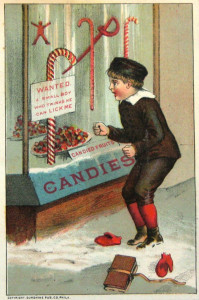 This blog is the second of two stories by Botanist in the Kitchen: The candy cane, that red- and white-striped hard candy imbued with peppermint oil, is a signature confection of the winter holidays. Peppermint has a long history of cultivation and both medicinal and culinary use. Infusions of the plant or its extract have been used for so many hundreds of years throughout Europe, North Africa and Western Asia that the early history of peppermint candies, including cane-shaped ones, is murky. Fortunately, the biology behind peppermint’s famous aroma is more well known than the story of how it came to be a Christmas staple.
This blog is the second of two stories by Botanist in the Kitchen: The candy cane, that red- and white-striped hard candy imbued with peppermint oil, is a signature confection of the winter holidays. Peppermint has a long history of cultivation and both medicinal and culinary use. Infusions of the plant or its extract have been used for so many hundreds of years throughout Europe, North Africa and Western Asia that the early history of peppermint candies, including cane-shaped ones, is murky. Fortunately, the biology behind peppermint’s famous aroma is more well known than the story of how it came to be a Christmas staple.
Botanically, peppermint is Mentha xpiperata (family Lamiaceae). The “x” in the Latin name indicates that peppermint is a hybrid species, in this case a naturally-occurring hybrid of spearmint (M. spicata) and watermint (M. aquatica) (McGee 2004). There are around fifteen species of Mentha widely distributed….Read more at BitKBlog.
Advent Botany 2015, Day 20: Sugar
By Jeanne Osnas and Katherine Preston (Botanists in the Kitchen) @BitKBlog
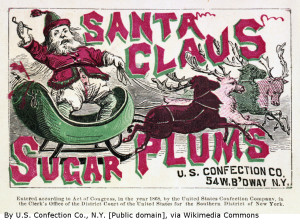 This blog is the first of two stories by Botanist in the Kitchen: Sugar plums dance, sugar cookies disappear from Santa’s plate, and candied fruit cake gets passed around and around. Crystals of sugar twinkle in the Christmas lights, like scintillas of sunshine on the darkest day of the year. Katherine and Jeanne explore the many plant sources of sugar.
This blog is the first of two stories by Botanist in the Kitchen: Sugar plums dance, sugar cookies disappear from Santa’s plate, and candied fruit cake gets passed around and around. Crystals of sugar twinkle in the Christmas lights, like scintillas of sunshine on the darkest day of the year. Katherine and Jeanne explore the many plant sources of sugar.
Even at a chemical level, there is something magical and awe-inspiring about sugar. Plants – those silent, gentle creatures – have the power to harness air and water and the fleeting light energy of a giant fireball 93 million miles away to forge sugar, among the most versatile compounds on earth, and a fuel used by essentially all living organisms.
Read the rest of this #AdventSugar post here.
Advent Botany 2015, Day 19: Pop goes the Christmas tree decorations!
By now you may well be adorning your Christmas tree with dazzling decorations and scrummy treats. This year I have a new eye catching addition, strings of popcorn. I’d not heard of this American tradition until this year but the fluffy cream trails of popcorn have been draped over fir branches for over a century across the pond.
During the First World War Alice Bradbury a cooking journalist asserted that popping corn was a patriotic occasion. There are rather wonderful tales of the thanksgiving peace negotiations where Indians are said to have brought along deer skin bags of popcorn to meet with Pilgrims. However, it is more likely that the popularity of popcorn with children led to associations with occasions, especially with the festival of Christmas.
Popcorn garlands were firstly created by colonists who adapted the European tree decorating traditions. With a big needle popcorn is strung creating lines which can be wrapped around the tree. Popcorn sculptures were also popular with mini Christmas trees created with popcorn which were skewered to an apple base. These creations store well and so alike other Christmas decorations, popcorn garlands have become family heirlooms.
The oldest ears of popcorn ever found were discovered in the Bat Cave of west central New Mexico in 1948 and 1950. The true age of the popcorn is in dispute but they are thought to be thousands of years in age. Christopher Columbus and his crew were the first westerners to see popcorn as natives of the West Indies exchanged goods for popcorn headdresses. In 1612 French explorers documented the popping of corn using hot sand by the Iroquois who consumed the popcorn in soup and beer.
Of course, popcorn is made from the kernels of Maize Zea mays subsp. evertapart of a species complex which is well known as a commercial crop for food production. At the plant apex there is a single male inflorescence tassel and between some of the leaf sheaths and the stem there are the stigma ‘silks’ of the female inflorescences. Once pollination has occurred the carpels at the end of the silks develop into rows of kernels sat on a white pithy centre. Upon heating the kernel the moisture inside causes the flesh to expand and burst the pericarp producing mushroom or snowflake shaped flakes. Ears produce a mixture of each popcorn shape variant but the snowflake is more desirable for consumption as it is softer on the palate.
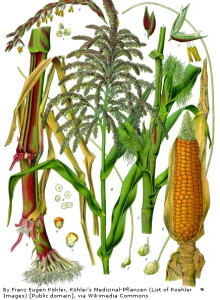 A solution to this issue was discovered when hybrids were developed to eliminate the mushroom producing kernels. In 1934 the Minnesota Agricultural Experiment Station released the first popcorn hybrid for commercial use called Minhybrid 250. By the 1940s hybrids had completely surpassed the open-pollinated varieties for popcorn production. Popcorn kernels are harder with the thickest pericarp and a much greater hard endosperm to soft endosperm ratio. In comparison to dent corn the popcorn plant has a larger tassel, thinner leaves and weaker stems and so is more prone to buckling. New hybrids have continued to be developed to strike a balance between agronomy limitations and the the quality and quantity of kernel production. This continued investment shows that popcorn is an established part of American culture.
A solution to this issue was discovered when hybrids were developed to eliminate the mushroom producing kernels. In 1934 the Minnesota Agricultural Experiment Station released the first popcorn hybrid for commercial use called Minhybrid 250. By the 1940s hybrids had completely surpassed the open-pollinated varieties for popcorn production. Popcorn kernels are harder with the thickest pericarp and a much greater hard endosperm to soft endosperm ratio. In comparison to dent corn the popcorn plant has a larger tassel, thinner leaves and weaker stems and so is more prone to buckling. New hybrids have continued to be developed to strike a balance between agronomy limitations and the the quality and quantity of kernel production. This continued investment shows that popcorn is an established part of American culture.
Why don’t you try it for yourself? Nowadays popcorn garlands are often stained with food colouring and so you can have a rainbow string of popcorn if you wish!
References
Corn: Origin, Technology, and Production by C. W. Smith, J. Betran, E. C. A. Runge (2004) John Wiley and Sons.
Popped Culture: The Social History of Popcorn in America by A. F. Smith (1999) University of Carolina Press.
Speciality Corns by A. R. Hallauer (2001) CRC press.
Advent Botany 2015, Day 18: Like a Virgin: the dream Tangerine!
By John Warren
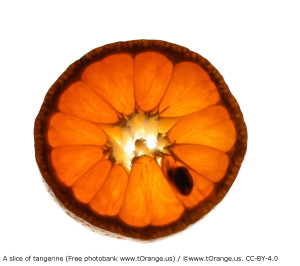 When I was a kid, every Christmas my dad would give me a tangerine, a six pence and a pat on the head. By the time I was ten, I had one hundred pounds in the bank and a flat head. Tangerines turn up every Christmas, in bad cracker jokes and as stocking fillers. But what do these little tart citrus fruit have to do with advent? Well the amazing thing is,…. you really are not going to believe this one. Brace yourself. Tangerines really do have virgin birth.
When I was a kid, every Christmas my dad would give me a tangerine, a six pence and a pat on the head. By the time I was ten, I had one hundred pounds in the bank and a flat head. Tangerines turn up every Christmas, in bad cracker jokes and as stocking fillers. But what do these little tart citrus fruit have to do with advent? Well the amazing thing is,…. you really are not going to believe this one. Brace yourself. Tangerines really do have virgin birth.
Although seasonal, the idea of virgin birth seems miraculous, if not totally unbelievable in our own species. However, in the plant kingdom it is relatively common place. Tangerines are far from unique in producing what look like perfectly normal seeds, which are in fact not the product of sex, but are clones, genetically identical copies of the mother plant.
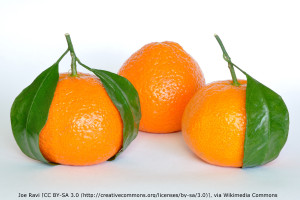 It turns out that one of the reasons why Gregor Mendel’s pioneering work on genetics was overlooked for so many years, was because he tried (and failed) to replicate his pea experiments with a species that was similar to tangerines in producing its seeds without sex.
It turns out that one of the reasons why Gregor Mendel’s pioneering work on genetics was overlooked for so many years, was because he tried (and failed) to replicate his pea experiments with a species that was similar to tangerines in producing its seeds without sex.
Tangerines, like many species of citrus, do more than just produce seeds asexually. They also produce seeds with multiple embryos. Thus it is possible to grow several plants from a single tangerine pip. In fact within a pip it is often possible to find both asexual copies of the mother tree and sexual embryos; the true offspring of the same tree.
Within the citrus family there is a trend that more commonly cultivated species are more likely to produce asexual seeds. Thus, tangerines, oranges, and grapefruit are highly asexual, lemons and limes are partly so and citrons and pummelos reproduce via sexually produced seeds. This is probably a product of the domestication process. Once a superior variety has been identified, then earlier farmers would have been interested in selecting types which breed true, and what breed more true to type than a virgin tangerine?
Sadly probably the real reason that tangerines appear at Christmas is not their virginity, but simply because they are in season, and they are cheap, so they make attractive presents for Scrooges everywhere!
Advent Botany 2015, Day 17: More nuts in December – Corylus cornuta
On Day 4 of the advent botany series this year we heard about the world’s 4th largest nut crop, the European Hazelnut (Corylus avellena). But, it’s poorly known cousin in the Pacific Northwest of North America, the beaked hazelnut (Corylus cornuta), is also a classic Christmas favourite! The name ‘cornuta’ means ‘horned’, appropriate for this species.
Beaked hazelnut produces a slightly smaller nut but can grow up to ten meters high. The Yurok Indigenous people of California still burn hazelnut to encourage the growth of young, straight shoots used in weaving. First Nations in British Columbia used slightly older shoots for making projectile shafts and other tools. The root was boiled to produce a blue dye, oily shells were used to keep fires burning and the nut was eaten or roasted and its oil rendered for chest and lung medicines. At one point, hazelnuts were an important currency in Southern British Columbia and a large sack of hazelnut was a typical bride price!
Although hazelnut is considered a wild shrub, ethnobotanists have been working with Indigenous people on documenting the ancient and recent management of sgan t’sek (hazelnut in the Gitxsan language). This “wild” shrub was likely managed using fire, coppicing, and was transplanted long distances – effectively creating little human-made hazelnut patches throughout Western Canada. One disjunct population in Northern British Columbia grows exclusively on old archaeological sites and in pairs, with another local favourite, native Pacific crab apple (Malus fusca).
After settler-colonial contact and widespread missionary work throughout British Columbia, a synchronicity of Indigenous practices exploded out of the resistance or adaptation to European traditions. Nlaka’pamux Elder, Marion Dixon remembers sewing little bags that were stuffed with local hazelnuts, and walnuts her grandfather bought from the store. A candy was placed on top of the bag and under the tree it went, “that’s all we ever got for Christmas, maybe some shoes if you were lucky.” During the Christmas celebrations Marion also remembers her grandmother crushing up the nuts to make a coffee-like drink. Darlene Vegh from Gitxsan territories told us it was the children’s duty to collect nuts in the fall, they would store them in the attic to let the involucres (green husk-like firs), rot off and by Christmas they were ready to go!
When discussing the hazelnut harvests in Northern British Columbia, most people lament how the squirrels seem to “get there first”. Indeed, between August and September hazelnut groves are absolutely teeming with squirrels! When asked if the squirrels disturb his hazelnut harvest, one Gitxsan Elder replied “they don’t bother me they help me!” – he would wait for the squirrels to clean the involucres aggregate and bury them, then raid their caches throughout the year.
So if you’re looking for a fun activity over the holidays, find a nice hazelnut grove and start poking around for a hard-earned Christmas treat!
Advent Botany 2015, Day 16: #AdventPoaceae: Grasping straws or sleeping in the hay?
Poaceae, as the song goes, is a family of grasses green and wonderful, but just how green and just how wonderful even Poaceae aficionado Dr M did not quite appreciate until he came to pen this #AdventPoaceae post.
All flesh is grass, so the big book says, reflecting the early recognition of the importance of grass as fodder for livestock and an appreciation of plants (grasses) as the basis of the food chain for all animals whether they eat plants directly (herbivores – cattle sheep and donkeys) or eat other animals (carnivores – dogs and cats) or both (omnivores – humans).
But it’s not just green grass that feeds the shepherd’s animals, dried grass (hay or straw) has been recognised as a valuable winter feed for farm animals since time immemorial and all over the world.
And this is where #AdventPoaceae comes in: all those festive carols and Christmas songs tell of the baby Jesus born in a stable because there was no room at the inn and he was laid in a manger by his mother Mary. But what was in that manger bare? Well, Poaceae for sure, and more specifically dried Poaceae, but was it hay or was it straw? And does it matter? After all being laid in a manger with dried Poaceae in lieu of fine bed linen just goes to emphasise the rude, lowly and humble beginnings of the baby Jesus, whether it was straw or hay is rather academic surely?
Well, yes and no! Those of you who have lain down in either or both of these will probably attest that laying down in amongst sweet and preferably new-mown hay is a far nicer experience than the straw equivalent! Yes? And maybe, like Dr M, you have childhood memories of building dens from straw bales (the old small rectangular kind bound with twine not the modern giant circular ones!). If so, you will no doubt recall the seriously sore, scratched arms and legs derived from being too much up close and personal with all those straw bales! Soft sweet hay is for sure the better option. But then comfort was not at a premium in that stable all forlorn, so comfort proves nothing here!
In fact the Christmas carols and songs are also of no help to our botanical #AdventPoaceae quest as both are used interchangeably to fit a rhyme, for example:
See him lying on a bed of straw,
A draughty stable with an open door.
and:
Away in a manger….
The stars in the bright sky
Looked down where He lay
The little Lord Jesus
Asleep on the hay.
So we are no further on with our question: hay or straw and does it matter?
Well, certainly it may not matter to all the little school children looking down at the nativity cribs or singing carols at this time of year, they have other things on their minds!
But, botanically, ecologically, agriculturally and even architecturally it matters quite a lot! So let’s look at each of these in turn:
- Wheat
- Sweet vernal-grass
Botanical matters – both hay and straw are in the Poaceae family, straw is from cereals in the tribe Triticeae – wheat, barley and the like, while hay is from a range of meadow-grown Poaceae, and the sweet smell of new mown hay due to coumarin and other compounds in e.g. Anthoxanthum odoratum (Sweet Vernal-grass in the tribe Aveneae). If you want to know why new mown hay smells so good the volatile chemicals released are probably the plant’s way of fighting herbivores and they may also summon beneficial insects such as parasitic and predatory insects that are natural enemies of the herbivores. Some go so far as to suggest these chemicals may also induce defense responses in neighbouring plants. Read more here.
- Cereal field in Lincolnshire, England
- Hay meadow in Ireland
Ecology matters – Straw, as we have seen, comes from crop fields, monocultures of generally low botanical interest. While hay is from meadows managed by mowing followed in some case by aftermath grazing. In England, flower-rich meadows are a rare and declining resource and of high conservation value. The best meadows include the type known as MG5 in the National Vegetation Classification system – Centaurea nigra (Black Knapweed) and Cynosurus cristatus (Crested Dog’s-tail grass) mesotrophic grassland. Meadows on wetter ground are of the MG4 type – Alopecurus pratensis (Meadow Foxtail) – Sanguisorba officinalis (Greater Burnet) grassland. Flower-rich meadows usually have a long history of low inputs of fertilisers and management by mowing and removal of the hay crop to feed livestock and which also opens up the vegetation for establishment of new plant species from seeds and thereby and incidentally driving the maintenance of botanical diversity.
- Traditional hay meadow management Grimani Breviary (ca. 1510)
- Flower-rich meadow in Wiltshire, England
- Loose stacked hay built around a central pole, Romania
Traditional meadow management throughout all of Europe, at least where climatic conditions are conducive to development of meadow grassland, would find the local folk heading to the meadows in the summer with their scythes. Whole families would have taken part, including young children, in this important event which, if done well, guaranteed sufficient feed for the local animals over the harsh winter months. Nowadays lowland meadows are a vanishing botanical resource and the remaining few hundreds of hectares in England are protected as nature reserves.
Dr M’s all-time favourite meadows are the staggeringly rich MG4 meadows at Clattinger farm and managed by Wiltshire Wildlife Trust.
STOP PRESS! Recent field research has identified new MG4 sub-communities check them out here! Furthermore, in an effort to increase the area meadows in our denuded countryside the spreading of so-called green hay is one technique used to restore flower rich meadows and special projects have been set up such as the Weald Meadows initiative.
Agriculture matters – In essence, straw is for bedding and hay is for feed. So actually we can imagine straw bedding on that stable floor (and possibly also in the thatch of the roof) and hay in the manger for to comfort the baby Jesus. Circumstantial evidence only of course, but in its way a bit of a clincher! Hay includes grass and other meadow plants that are cut when alive and full of grain and other seeds. The purpose of the hay is to feed animals. Straw, on the other hand, is simply the stalks of standing wheat or barley or other cereal plants that contain no grain (this has been removed by the harvester).
Modern farming has tended to replace hay with silage which is cut early and baled tightly while the grass is still moist to encourage anaerobic fermentation. The resulting silage is of high feed value but silage fields are botanically less interesting than the hay meadows they often replace due to the early cutting and the use of fertilisers and other chemical to maximise productivity (at expense of diversity).
Architecture matters – This is an interesting one, increasingly straw bales are being used for building eco-homes due to their great insulating properties and green credentials compared to other building materials. It’s a fascinating area and you can read more about it here and see examples here
- Straw home during build
- Straw home end product
So, next time you see that crib surround by children singing their hearts out about hay or straw or whatever, just remember there’s more to Poaceae than meets the eye, a family of grasses green and wonderful is just for starters!
Image credits
https://commons.wikimedia.org/wiki/File:Gerard_van_Honthorst_001.jpg
http://www.wheelbirks.co.uk/playbarn
https://en.wikipedia.org/wiki/Hay
http://www.live-ibn.in.com/photogallery/5501.html
References
http://www.plantphysiol.org/content/121/2/325.full
Advent Botany 2015, Day 15: Mahleb
By Andrew Bewsey, Jordan Bilsborrow and Maria Christodoulou
Mahleb is used many festive bakes for its aromatic properties. Found in texts dating to the medieval times, its popularity increased through the expansion of the Ottoman Empire. Prunus mahaleb, the source of Mahleb, is a species of cherry tree which is native to the Mediterranean region as well as parts of Asia. The trees can grow up to 10m and are relatively hardy, found at altitudes of 2000m. The fruit is yellow at first, becoming black later in the season, with bitter flesh and a smooth stone.
To obtain the highly scented Mahleb spice that is used often in traditional confectionery in the Eastern Mediterranean and the Middle East, the seeds from the cherries are crushed to a fine powder. The white Mahleb powder, together with Mastic and Cardamom is considered the Holy Trinity of spices for Greek bakers. Due to its similarity to flour, hornswogglers would adulterate it and charge premium prices to unsuspecting customers. To avoid this, traditional cookbooks would advise shoppers to only purchase whole seeds and crush them at home. For optimum extraction, it was suggested that the seeds were toasted prior to being crushed along with either sugar or Mastic.
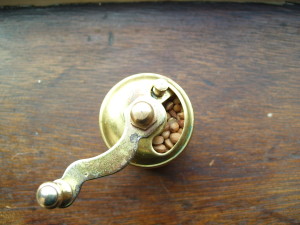
Traditional mahleb hand grinder with seeds. (By Leslie Seaton (Flickr: Mahleb Grinder) [CC BY 2.0 (http://creativecommons.org/licenses/by/2.0)], via Wikimedia Commons)
Its festive connection links to the celebration of St Basil (who is the Greek equivalent of Santa Claus). On the 1st of January Greek families prepare a Vasilopita in honour of the hard-working Saint; a rich, sweet bread baked with a coin inside. Whoever finds the coin in their slice is considered lucky for the New Year. In the Middle East it is widely used in festive desserts such as Ma’amoul which is a fruit and nut filled pastry eaten during Ramadan and at Eid. In Saudi Arabia, it also has cosmetic uses, mixing the powder with henna to produce traditional wedding tattoos. The extracted oil from seeds is also considered nourishing for hair.
If you wish to attempt a traditional bake for St Basil this year, a recipe can be found here.
Re-visit this blog next week to see some of our own Mahleb cooking.
Advent Botany 2015, Day 14: The Olive
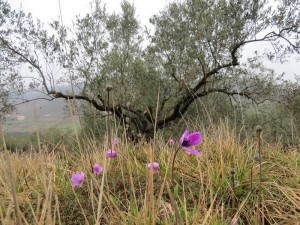 An olive branch shown with a dove is often depicted on Christmas cards to symbolise peace and goodwill amongst men.
An olive branch shown with a dove is often depicted on Christmas cards to symbolise peace and goodwill amongst men.
Where this concept of the olive branch representing peace originated from is unknown but it is likely to go back to the ancient Greeks. Legend states that during the founding of a city-nation in Ancient Greece, Athena and Poseidon went against each other for its patronage. To bribe the new citizens, Poseidon presented them with a new spring. Even though this impressed the citizens, when some of them decided to taste the water they found it to be pure sea water. With half her battle already won by her competitor’s faux pas, Athena presented the citizens with the first domesticated olive tree. In her honour, the grateful inhabitants named their new city after her. Even today, modern Athenians during the summer droughts wonder whether they should have asked Poseidon to rethink his gift instead of rejecting him straight away…
 In addition, the olive branch is connected with the ancient Olympic Games where the victors of competitions were awarded with a wreath of olive branches, made from a wild olive tree found inside Hera’s Temple in Olympia. Wars between Greek-states were suspended during the games which is perhaps where the symbol of peace originates. Alternatively as the Olive tree takes between 5 to 7 years to produce fruit, it could only be successfully cultivated and harvested during periods of peace.
In addition, the olive branch is connected with the ancient Olympic Games where the victors of competitions were awarded with a wreath of olive branches, made from a wild olive tree found inside Hera’s Temple in Olympia. Wars between Greek-states were suspended during the games which is perhaps where the symbol of peace originates. Alternatively as the Olive tree takes between 5 to 7 years to produce fruit, it could only be successfully cultivated and harvested during periods of peace.
The dove and olive branch symbolism is also linked to early Christianity, especially the Old Testament. In the story of Noah, a white dove returns to the Ark with a single olive branch, symbolising the end of The Flood. The olive branch is still considered to represent peace for example it is depicted on United Nations flag and logo.
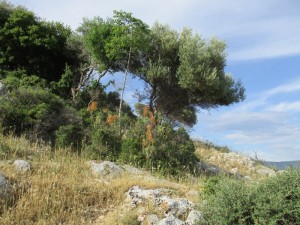 The olive tree is a native of The Mediterranean region – in the plant family Oleaceae, which includes Fraxinus excelsior (Ash) and Ligustrum vulgare(Wild Privet) in the UK. The fruit (a drupe) is an important source of food and oil. Olive production in parts of the Mediterranean is vital to the economy, and plays an important heritage/ socio-cultural role. It is especially important in marginal regions with poor productivity (mountainous or hilly areas); Olive trees can grow in poor, stony soil which it would be difficult to put to other crop uses (European Commission 2012). Olive production using traditional methods requires significant labour, and provides agricultural work during the autumn and winter (the peak harvest period).
The olive tree is a native of The Mediterranean region – in the plant family Oleaceae, which includes Fraxinus excelsior (Ash) and Ligustrum vulgare(Wild Privet) in the UK. The fruit (a drupe) is an important source of food and oil. Olive production in parts of the Mediterranean is vital to the economy, and plays an important heritage/ socio-cultural role. It is especially important in marginal regions with poor productivity (mountainous or hilly areas); Olive trees can grow in poor, stony soil which it would be difficult to put to other crop uses (European Commission 2012). Olive production using traditional methods requires significant labour, and provides agricultural work during the autumn and winter (the peak harvest period).
The Olive is a long-lived evergreen tree between 8 – 15m tall; the oldest specimens are between 2000-3000 years old for example the Olive Tree of Vouves on the island of Crete. Olive trees are hardy and drought-, disease- and fire-resistant — part of the reason for their longevity and their widespread use in the Mediterranean region.
Interesting facts about the Olives
- The world consumes about 2.25 million tonnes of olive oil a year.
- It takes seven litres of olives to make one litre of olive oil.
- Olives are rich in Vitamin E and ‘good fat’.
- Your five daily portions of fruit can include 16 olives, which make one portion.
- Green olives are harvested first while the black ones are allowed to ripen naturally on the tree.
- Today there are over 800 million olive trees planted worldwide.
- The first eye shadow was created in Ancient Greece by mixing ground charcoal with olive oil.
- It was used by Roman women as protection from the sun.
Advent Botany 2015, Day 13: Putting Christmas on the map!
I wonder whether a ship captain was pleased to spot land on an auspicious day? I can imagine that assigning names according to the calendar might remove the challenge of thinking something creative or avoid the political intrigue involved in selecting a VIP to honour. Perhaps the islands named Wednesday, Thursday, Friday and Sunday were particularly difficult to name. Moving on to all things seasonal however, there are two islands named Christmas, Kiritimati in the Pacific (pronounced Christmas and named by Captain Cook) and Christmas Island in the Indian Ocean.
The Christmas Island featuring in today’s blog post was named by Captain William Mynors who sailed by in the East India Company ship Royal Mary in December 1643. Captain Swan was the first European to actually visit in 1688, and William Dampier reported the island as uninhabited after his landing in 1699. It lies in the Indian Ocean, about 220 miles south of the Indonesian island of Java and is now an Australian Territory.
Mineral surveys carried out by Dr John Murray during the 1872-76 HMS Challenger expedition predicted that there would be a good source of phosphate in the region, and Britain annexed the island in 1888 with a view to mine for rock phosphate. The major use of mined phosphate is to make plant fertilisers, but it is a finite resource which could run out in future. Phosphate contains phosphorous (the P in NPK fertiliser) which is an essential element for life. As well as using phosphorous in DNA strands and cell membranes, it is important in plants as a constituent of the chemical which is produced to capture energy from the sun. Plants with a phosphate deficiency become stunted, crops show a reduced yield and leaves may develop purple-tinges.
From 1897 to 1898 William Charles Andrews, a geologist from the British Museum, surveyed the island before mining started, including an assessment of the local flora and fauna. These herbarium sheets are some of the specimens collected during his 10 month long reconnaissance trip. Many more are held in the herbaria of the Natural History Museum and Kew, and the report of his voyage is available to read thanks to the excellent Biodiversity Heritage Library.
Christmas Island has a number of different ecosystems from the shore-line to the tropical rainforests of the plateau and is home to about 200 plant species, some of which are endemic. Endemics are species which are not found anywhere else in the world. With such limited geographical ranges, endemics are often targets of conservation efforts as they could be easily lost. Mining continues to be an important industry on Christmas Island, but part of the island is protected as an Australian National Park. The national park covers over 60% of the island as well as areas of its fringing coral reef.
Check out plenty more lovely Easter Island herbarium sheets at Culham Research Group here.
Photo credits:
Olive Tree photos kindly provided by Dr Steven Heathcote.
References:
Dictionary of British and Irish Botanists and Horticulturalists by Ray Desmond (check it here)
A monograph of Christmas Island (Indian Ocean); physical features and geology by Charles W Andrews (check it here)
The Christmas Island tourist board: https://www.christmas.net.au/
For more on this and other fascinating herbarium facts visit Herbology Manchester
Editors note: If you are feeling the cold of a northern hemisphere at present then you might like to visit the ‘Plan your trip‘ section of the Christmas Island web site.
Advent Botany 2015, Day 12: Anyone can grow paperwhites but understanding their taxonomy is a different matter!
By Dawn Bazely
Paperwhites, Narcissus papyraceus, are one of the most fragrant of the Narcissus species. Although they are native to the Mediterranean region, the bulbs have become naturalized in other regions with mediterranean climates, i.e. warm, dry summers and cool, wet winters, such as California.
Along with blooming Amaryllis (Hippeastrum) and Poinsettias (both of which featured in #AdventBotany 2014), Paperwhites are popular Christmas gifts in North America. Forcing, the process of getting spring flowering bulbs to bloom early, is easy to do with paperwhite bulbs, which grow easily on gravel, in the same way that hyacinths and crocus bulbs grow in bulb vases. The most common Paperwhite that I see in Toronto, is variety ‘Ziva’.
While many members of the genus Narcissus, such as daffodils, are hardy, and grow in Canadian gardens, Paperwhites are tender and only survive in North American gardening zones 8-11 across the very south of the USA.
Jordan Bilsborrow is a Narcissus taxonomist who is doing his PhD in Alastair Culham’s and co-supervised by John David, Head of Horticultural Taxonomy at the Royal Horticulture Society (RHS) where the International Registration Authority for Daffodil cultivars is based. Jordan’s research is investigating the taxonomy of Narcissus sections Jonquillae and Apodanthi.
I learned from Jordan’s blog post, that depending on who you read, there may be 16-150 species of Narcissus. One of the reasons for the controversial and unresolved taxonomy of this genus is that that plants hybridize easily. Also, because they are so popular, there are a staggering 30,000 cultivars or varieties that have been bred, further adding to the taxonomic complexity.
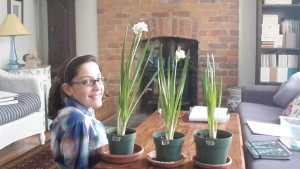
Carrie with some of her experimental Paperwhites
We did research on Paperwhites at my house, when my younger daughter, Carrie, now a Biology undergraduate, made them the subject of her grade 8 science fair project. So, thanks to Paperwhites, we can have the beauty of flowering Narcissus in the middle of winter, well ahead of spring-flowering plants outdoors.
References:
http://blogs.reading.ac.uk/crg/phd/jordan-bilsborrow/
https://hort.purdue.edu/ext/WRG_paperwhite.html
https://hort.purdue.edu/ext/HO-19.pdf
http://www.uvm.edu/pss/ppp/articles/paperwht.htm
Advent Botany 2015, Day 11: Mmmm I can almost smell those Chestnuts roasting on an open fire!
“Chestnuts roasting on an open fire” that botanical Christmas hit made famous by Dr M (or was it someone else?) so evocative of all that is festive about Christmas!
Those of you who attempted Dr M’s autumn fruits quiz will know that, despite superficial similarity, our festive Sweet Chestnuts (Genus Castanea in the Family Fagaceae) are unrelated to Horse Chestnuts (Genus Aesculus, which are in the same family as Maples – Sapindaceae. And, of course, Horse Chestnuts are not nuts at all! But Chestnuts are!
Don’t you just love how botanical nomenclature keeps you on your toes!
Anyway, as part of #AdventBotany 2016, Mary Williams has written a lovely post on Chestnuts and you can see and read (but not quite smell the delicious aroma) here.
Advent Botany 2015, Day 10: Rice Pudding
By Jana Vamosi and Sarah Walshaw
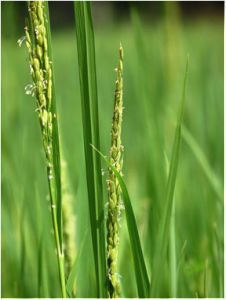 As regular visitor to these botanical pages will know, Dr M is particularly fond of Poaceae and Oryzeae is a tribe of grasses which contains 12 genera, including both cultivated rice (Oryza) and wild rice (Zizania).
As regular visitor to these botanical pages will know, Dr M is particularly fond of Poaceae and Oryzeae is a tribe of grasses which contains 12 genera, including both cultivated rice (Oryza) and wild rice (Zizania).
Although we have evidence of rice being domesticated by 10,000 years ago in China, African rice was independently domesticated by 3,000 years ago in West Africa and Asian rice was introduced to Iberia by 1,000 years ago, but rice pudding was not a Christmas tradition in Denmark until after WWII, when rice became increasingly popular. Read the full post here.
For more on the botany of Rice check the Whiteknights Tropical Biodiversity blog here.
Advent Botany 2015, Day 9: Reindeer Moss?
By Andrew Doran
It’s not a moss, it’s a lichen! And arguably not even a real plant as lichens are mainly fungal tissues with a little algae thrown in for good measure!
Cladonia rangiferina and Cladonia portentosa are both known as reindeer moss or reindeer lichens. This lichen takes its specific epithet from the reindeer, Rangifer tarandus that consumes it during the winter months when other food is scarce.
Although more cold hardy than where we store it in the herbaria, this specimen is now housed in the University Herbarium, University of California, Berkeley where it’s considerably more hospitable than its native habitat of northern boreal forests.
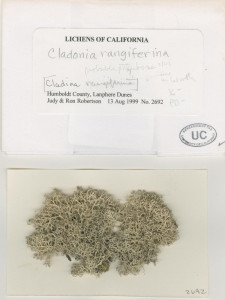 This specimen is amongst 47,000 others from the University Herbarium that have been digitized as part of an ambitious consortium of North American lichen collections that is searchable at: http://lichenportal.org/
This specimen is amongst 47,000 others from the University Herbarium that have been digitized as part of an ambitious consortium of North American lichen collections that is searchable at: http://lichenportal.org/
Using the database Symbiota, participants can clone duplicates, run optical character recognition software on typed labels and a myriad of other techniques to make data entry efficient.
Interested in lichens? then check Dr M’s intro to fruticose (branching) lichens here.
Advent Botany 2015, Day 8: Wassailing
By Yvette Harvey and Maria Christodoulou
After last year’s relatively well behaved advent plants, it is time for the more obscure and yet omnipresent ingredients of a good Christmas. Time for the humble apple, or as we will try to convince you by the end of this post: time for the Amazing Apple!
A plate of cider apples. (l to r) ‘Perthyre’, ‘Broom Apple’, ‘Monmouth Green’, ‘Pen Caled’, ‘Frederick’, ‘Upright French’, ‘Twyn-y-Sheriff’ and ‘Cadwallader’ at Raglan Cider Mill, Wales. ©RHS/Tim Sandall
As most of you probably know, apples are a stalwart of the mince pie and Christmas pudding, however we won’t dwell on these, instead we will head straight for their unique role in Twelfth Night in the form of cider.
Wassailing can take three different forms, all including the apple based product, cider: sharing a drink within a confined space, sharing a drink with your neighbours (similar to a pub crawl…), and sharing your drink with orchard trees. The term originated from the Old English “was hál”, meaning “be in good health”, it traces its origins at least as far back as the 8th Century, mentioned in Beowulf. The aim of the exercise is to promote good health (through the means of drinking, of course) for both people and harvest.
Frontispiece showing the use of cider-making machinery, from John Worlidge: Vinetum Britannicum or a treatise of cider. (2nd impression). London: 1678. ©RHS Lindley Library.
Simon Garbutt, in The Garden (2006, vol 131, p. 828-831) takes the reader through an evening of wassailing starting with a torch-lit procession leading to the orchard where twelve bonfires are lit in a circle, the centre of which is a tree. Under that tree a 13thbonfire, known as the Judas, is briefly lit and almost immediately extinguished. The roots are then soaked with cider and a cider-soaked piece of bread is placed amongst the branches. The wassailers burst into song while the embers are stamped out. RHS Garden Wisley’s Orchard has been traditionally blessed through the ritual of wassailing (no gunfire, just drumming, singing and a small fire). This is currently a staff-only event, but they are hoping for it to become a public event in the future. There are many public wassailing events around the world, especially in the UK (including Cornwall, Sussex,Hampshire, Berkshire & the Southern marches) , USA and Canada.
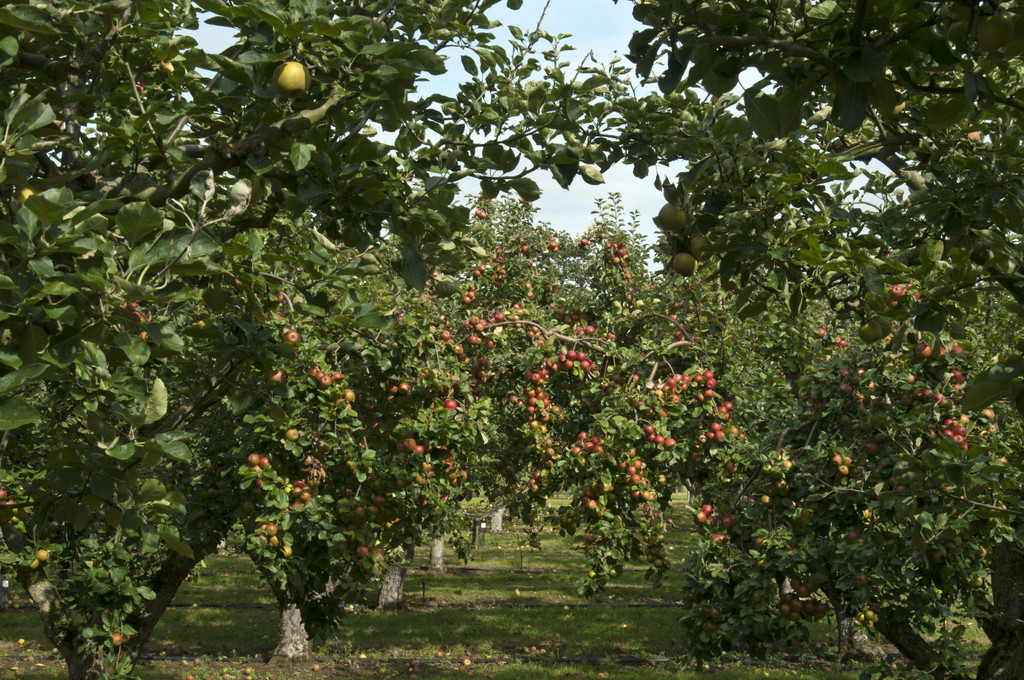 Apple orchard at RHS Garden Wilsey. ©RHS/Tim Sandall
Apple orchard at RHS Garden Wilsey. ©RHS/Tim Sandall
The more popular type of wassailing involves drinking from a large bowl filled with mulled cider passed around the Christmas table, or carried from house to house. A wonderful example of a wassailing bowl is found in the Victoria and Albert Museum, South Kensington, dating back to the 17th Century. Following the colonisation of the West Indies in the early 17th Century, the commonly used wood was the now Endangered Guaiacum officinale (Lignum vitae) because of resistance to liquids due to its high oil content.
Cider apples
Apples for cider are grouped into four classes: Sweet; Bittersweet; Sharp, and Bittersharp, based on the proportions of sugar, tannin and acid in the fruit. The UK and US (Sweet; Sharp; Sharpsweet; Bittersweet; Bittersharp) grow different varieties generally.
Should you wish to increase your 2016 harvest, here is a handy recipe for mulled cider.
Advent Botany 2015, Day 7: A light in the darkness
In Scandinavia, particularly Sweden and Norway, Saffron is associated with advent, Christmas, yule and especially Saint Lucia’s night. The convoluted history of solstice celebrations may be read elsewhere but the fragrant, orangey stigmas of Crocus sativus suffuse celebrations of the ending of the year in the form of Lussebullar.
Saffron has famously been worth, pound for pound, more than its weight in gold (Kafi et al. 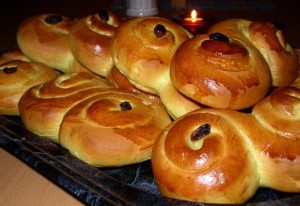 2006); and has been known, and grown for 1000s of years. The origins of widely, and long cultivated crops can be quite difficult to pin down. This is especially true in Saffron as the parts essential for identification do not preserve well. Minoan art from Crete depicting ‘the Saffron gatherers’ is indicative that it has been used since at least 1645 BCE.
2006); and has been known, and grown for 1000s of years. The origins of widely, and long cultivated crops can be quite difficult to pin down. This is especially true in Saffron as the parts essential for identification do not preserve well. Minoan art from Crete depicting ‘the Saffron gatherers’ is indicative that it has been used since at least 1645 BCE.
It is thought that Saffron as it is known stems from one of three parent species; C. cartwrightianus, C. thomasii and C. pallasiifrom somewhere in Greece (Caiola et al. 2004; Alsayied 2015). Its reproduction is entirely vegetative, being not only self-incompatible, but also male sterile. Its continuation, therefore, has been solely dependent on man’s horticultural pursuits. There is so little genetic variation in the species that each individual plant is practically genetically identical to the rest of the plants in the field (Rubio-Moraga et al. 2009).
The long history with agriculture has meant that there are several stories interwoven here. Alexander the Great used Saffron infused baths to heal not only his own wounds, but also those of his common soldiers. Saffron may have arrived into Britain in the 1350s being smuggled within a hollowed out pilgrim’s staff (Willard 2002).
 Despite mankind’s link with Saffron, its cultivation has waxed and waned throughout history. The economics of its production requires access to abundant cheap labour, needed particularly during the short 3 week harvesting season (Kafi et al. 2006). Recently it has been re-introduced as a commercial crop into the UK after a 200 year absence close to the eponymously named Saffron Waldon (Telegraph 2014).
Despite mankind’s link with Saffron, its cultivation has waxed and waned throughout history. The economics of its production requires access to abundant cheap labour, needed particularly during the short 3 week harvesting season (Kafi et al. 2006). Recently it has been re-introduced as a commercial crop into the UK after a 200 year absence close to the eponymously named Saffron Waldon (Telegraph 2014).
There is some evidence to support the idea that Saffron can aid in the treatment of mild to moderate depression (Lopresti & Drummond 2014), so perhaps its association with the darker times of the year is not surprising.
References:
Alsayied, N., 2015. Molecular diversity and relationships of saffron and wild crocus species.
Anon, 2014. Putting saffron back into Saffron Walden. Telegraph. Available at:http://www.telegraph.co.uk/news/earth/agriculture/farming/11212315/Putting-saffron-back-into-Saffron-Walden.html [Accessed December 6, 2015].
Caiola, M., Caputo, P. & Zanier, R., 2004. RAPD analysis in Crocus sativus L. accessions and related Crocus species. Biologia Plantarum.
Kafi, M. et al., 2006. Saffron (Crocus sativus) Production and Processing, Science Publishers.
Lopresti, A.L. & Drummond, P.D., 2014. Saffron (Crocus sativus) for depression: a systematic review of clinical studies and examination of underlying antidepressant mechanisms of action. Human psychopharmacology, 29(6), pp.517–27.
Rubio-Moraga, A. et al., 2009. Saffron is a monomorphic species as revealed by RAPD, ISSR and microsatellite analyses. BMC research notes, 2, p.189.
Willard, P., 2002. Secrets of Saffron: The Vagabond Life of the World’s Most Seductive Spice, Beacon Press.
Advent Botany 2015, Day 6: I’m dreaming of a White Cedar!
By Dawn Bazely
Eastern White Cedar (Thuja occidentalis) is popular in garlands and ropes used for door and window decorations during the Christmas holiday season in Canada. White Cedar fronds are floppy, with scaly leaves rather than needles, so it’s not very good for use as a Christmas tree. My friend, Joanne, owner of Willem and Jools florist in Toronto, is holding a cedar garland.
- Joanne (Willem and Jools florist) with cedar garland
- Boxes of fresh cedar fronds for Christmas decorating
White cedar would have been used to decorate historic Colborne Lodge when John and Jemima Howard lived there. But, because live and cut plants have a place everywhere in the world, it also fits in well with trendy shops, like Grateful Head, one of Toronto’s hippest hairdressers.
- Christmas at Colborne Lodge
- White cedar garlands at the grateful head
Well before European colonists arrived in North America, White Cedar was hugely important in traditional Anishinabe culture as the major purifying plant. Jordan Paper (2007 ch. 8) describes its important role in the Anishinabe sweat lodge or Spirit Lodge, madodoswun, ceremony. The Anishinabe First Nation living in what is now the Greater Toronto Area when John Howard built Colborne were the Mississaugas. The Mississaugas First Nation is a strong and active community today, and a leader in advocating for urban trees.
- White Cedar range distribution
- White Cedar fencing
The range of Eastern White Cedar extends from Canada’s boreal forest biome south into the Great Lakes-St. Lawrence ecozone of Ontario and Quebec. The congeneric (same genus) species, Western Red Cedar, Thuja plicata, occurs in British Columbia. Eastern White Cedar does not grow nearly as tall as Western Red Cedar.
White Cedar grows in a wide range of habitats, from swamps to dry areas. In the winter White Cedar stands provide important cover for white-tailed deer which “yard” or crowd into them. The snow is not as deep in these stands of trees, and the deer feed on the cedar branches.
White Cedar can be very slow growing, and can survive in stressful habitats such as limestone cliff faces (Kelly & Larson, 1999). Botany professor, Doug Larson, studied White Cedar along the Niagara Escarpment. He and his students found that some of these scraggly looking trees were 400 years old (Kelly and Larson 2007). The Last Stand: A Journey Through the Ancient Cliff-Face Forest of the Niagara Escarpment is all about this previously unrecognized unique forest ecosystem.
On a more pedestrian note, White Cedar is a popular hedging plant. Unsuspecting homeowners plant small cedar trees in cute little hedges, which, when untended, grow into tall Canadian versions of the out-out-control British Leylandii hedge.
- White Cedar hedge
- White Cedar fencing
White Cedar wood is brittle, and therefore, not much used for indoor furniture. But, the wood is durable and rot-resistant, so the trunks are commonly used for split rail fences, roofing shingles, and also for outdoor furniture.
So, there you have it: eastern white cedar, a plant of great cultural and historic significance for Canada’s First Nations and European colonists, with relevance in the trendiest places. It’s truly an evergreen!
Find the full White Cedar advent botany blog at Culham Research Group.
Image credit: (Range map from “Atlas of United States Trees” U.S. Geological Survey digitized by Elbert L. Little, Jr.).
References:
Kelly, P.E. and D.W. Larson. 1999. The Niagara Escarpment Ancient Tree Atlas Project; the hunt for Ontarioís oldest trees. Paper in Leading Edge ’99: Making Connections Conference Proceedings, 5. Toronto: Ontario Ministry of Natural Resources
Kelly, P.E. and Larson, D.W. 2000. An Ecological Assessment of the Long-Term Survival of Ancient Populations of Eastern White Cedars on Cliff Faces of the Niagara Escarpment. pp 275-281 in Pollock-Ellwand et al. eds. Proceedings of the Parks Research Forum of Ontario AGM 22-23 April1999. PRFO, University of Waterloo, Ontario, Canada.
Kelly, P.E. and Larson, D.W. 2007. The Last Stand: A Journey Through the Ancient Cliff-Face Forest of the Niagara Escarpment. Dundurn Press, Toronto, Ontario, Canada.
Paper, J.D. 2007. Native North American Religious Traditions: Dancing for Life. Praeger Publishers. Westport CT USA.
Advent Botany 2015, Day 5: By Jove, it’s a walnut!
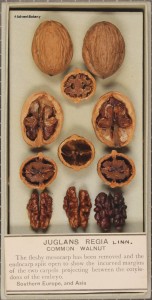 In my humble opinion, the hazelnut is OK, but in my stocking I’ll be sure to find some walnuts. Clearly I’m not the only one to put this as the king of the nuts either, as the botanical name, Juglans regia, translates as ‘royal nut of Jupiter’. One myth has the Roman god Jupiter (also known as Jove) living on walnuts during his time on Earth.
In my humble opinion, the hazelnut is OK, but in my stocking I’ll be sure to find some walnuts. Clearly I’m not the only one to put this as the king of the nuts either, as the botanical name, Juglans regia, translates as ‘royal nut of Jupiter’. One myth has the Roman god Jupiter (also known as Jove) living on walnuts during his time on Earth.
Walnuts have been used medically for centuries. In the ancient herbalist system known as the Doctrine of Signatures, plants with medicinal properties would resemble the part of the body they would be effective at curing. The walnut’s resemblance to a human skull and brain meant that it would be recommended for injuries to the head (for example by treating head wounds with walnut oil).
Walnuts and pears you plant for your heirs. (Spanish proverb)
…. but you don’t need to wait to read the rest of this blog, just follow the link to Herbologymanchester to see the rest of #AdventBotany Day 5.
But do come back on Sunday for day 6!
For more by Rachel Webster follow: @Aristolochia
For those interested in US political history; you might like to read the poem by Pat O’Cotter: A Woman, A dog, and A Walnut tree.
Advent Botany 2015, Day 4: Lore of Hazelnuts, Corylus avellana
Purple quality streets, pralines and ferrero rocher are always the first to vanish from chocolate tins during the festive grazing period.
Their crunchy moreish hazelnut centres are truly too tempting to miss! Unlike many festive spices, scents and treats the Hazel tree is native to the UK with a wide distribution across Europe and Asia Minor. Our long association with Hazel has created some fantastic folklore and traditions.
Hazel coppice inhabits the understorey of woodland with a vaulted canopy of timber trees above. Over the winter period the yellow male catkins are some of the earliest catkins to appear and are often referred to as lamb’s tails as they bounce in the breeze. The female flowers are like tiny red rubies which sprout in the New Year and look exquisite against the February snow. The bark of the tree is brown with a silvery sheen and the stems twist towards the light from the base of old stands. The stems are traditionally harvested for poles and charcoal production. During the growing season Hazel produces large almost round, bright green leaves with toothed margins and nuts are developed by mid-August. The genus of Hazel Corylus translates to a helmet, which describes the deeply lobed green husk that hugs each fruit. By autumn each step along a woodland floor can expel a crack as Hazelnut cases shatter underfoot. Historically Hazelnuts have been a plentiful source of income and were harvested.
Villagers in Dorset used to hold annual nutting expeditions where women would wear special canvas dresses to collect the harvest. The nuts would be sold to the dyeing industry with most families covering a whole years rent from the proceeds! With such bountiful rewards on offer stories emerged to discourage unscrupulous harvests. In the north of England unripe nuts were guarded by Churnmilk Peg and Melsh Dick, two goblins. Another caution warned against gathering nuts on a Sunday when the devil may seek your attention. Below is a song passed down from a Somerset servant depicting the fate of a Sunday nutter.
“Oh there was a maid, and a foolish young maid,
And she went-a-nutting on Sunday.
She met a gentleman all in black,
He took and he laid her a-down on her back,
All a-cause she went nutting on Sunday.”
Mystical folklore uses Hazelnuts to denote wisdom and inner peace. In the Fenian Irish tales nine purple Hazelnuts fall into the Well of Wisdom and are eaten by a salmon. With this act the salmon gains all the world’s knowledge which is then in turn transferred to the first person to eat the fish. A servant named Fionn is asked to bake the fish but sucks his finger after burning his fingertip whilst cooking. In this moment Fionn gains untold wisdom and so becomes the leader of the heroes of Fenian. This strong symbolism filtered in to other cultures with Highlanders carrying Cnò-chomblaich (a conjoined pair of Hazelnuts) as a charm against witchcraft on their long journeys and Travellers wearing a little bag of Hazelnuts around their necks as a preventative for piles. During the pagan festival of Samhain Hazelnuts were cast into the fire by women whilst naming prospective husbands. The nut and name with the loudest crack was deemed to be the successful choice.
So next time you feel a bit nutty this Christmas grab hold of a nutcracker or Nutella and break out some mesmerising Hazelnut tales.
References
Plants that feed and serve us by Else Hvass (1973 Blandford Press)
Oxford Dictionary of Plant-lore by Roy Vickery (1997 Oxford University Press)
The Poet’s Ogam: A Living Magical Tradition by John-Paul Patton (2010 self published)
Advent Botany 2015, Day 3: The Yule Log
It’s not a heavy metal band, but Galanthophilia sounds as if it could be. It is the name for those with a true love of snowdrops. These tiny plants contain a treatment for mild Alzheimer’s Disease called Galantamine, but that can also be found in Narcissus and other related plants. This blog is not about medicine, it is about obsession.
Many gardeners think of snowdrops as a sign of spring, looking forward to the great white sheets of Galanthus nivalis that brighten up January and February in the UK but there are other less known species with different characters.
The first snowdrop species into flower each year is G. reginae-olgae, discovered in Greece in 1876, which starts flowering in September and can continue into December. It is larger than the common snowdrop and it’s leaves are slightly greener however it does make a beautiful plant for the garden and is easy to grow. Given it’s flowering season it is truly an Advent snowdrop!
But these two species are only 10% of snowdrop diversity, there are 20 species of Galanthus spread around Europe, western Asia and the middle east. All species have a similar basic appearance of strap like green or grey-green leaves with nodding white flowers but there is a lot of variation in the detail.
Their relationships and species limits have been the subject of study for a long time and the botanist, and University of Reading alumnus, Aaron Davis has perhaps studied them most closely over the past three decades while working at Kew. Understanding of the species relationships is now based on DNA sequence work.
Galanthophilia
Species diversity is not the end of the story with snowdrops; novel cultivars (selections made by growers and breeders) are the great desire of snowdrop enthusiasts (people known as Galanthophiles). It is here that you begin to realise what an obsession snowdrops can become. One of the most impressive illustrations of what is becoming snowdrop fever is the list of prices paid for new cultivars:
2011 a single blub of Galanthus plicatus ‘E.A. Bowles’ sold for £350
2012 a single blub of Galanthus woronowii ‘Elizabeth Harrison’ sold for £725
2015 a single bulb of Galanthus plicatus ‘Golden Fleece’ sold for £1390 plus £4 p&p on ebay.
So, as you enjoy those delicate white flowers each winter, have a good look in case you have the latest new snowdrop cultivar in your garden. That would be a really good Christmas present!
References
Bishop, M., Davis, A.P. & Grimshaw, J.M. (2001). Snowdrops: a monograph of cultivated Galanthus. Maidenhead: The Griffin Press.
Rønsted, N., Zubov, D., Bruun-Lund, S., Davis, A.P. (2013) Snowdrops falling slowly into place: an improved phylogeny for Galanthus (Amaryllidaceae). Molecular Phylogenetics and Evolution. 69: 205-17
Advent Botany 2015, Day 2: The Yule Log
The Yule log was traditionally a large branch, trunk or whole tree brought indoors to burn 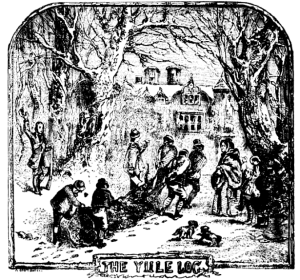 slowly over the Christmas period and in to the New Year. Currently Yule concides with the 12 days of Christmas, 21st December to January 1st. What seems unclear is how the tree was treated before Yule, some accounts suggest it was freshly harvested however the use of oak (Quercus) in England as a favoured Yule log suggests at least two years planning ahead to allow the wood to dry sufficiently to burn well!
slowly over the Christmas period and in to the New Year. Currently Yule concides with the 12 days of Christmas, 21st December to January 1st. What seems unclear is how the tree was treated before Yule, some accounts suggest it was freshly harvested however the use of oak (Quercus) in England as a favoured Yule log suggests at least two years planning ahead to allow the wood to dry sufficiently to burn well!
There is much interest now in the use of wood to heat homes in the UK because this is seen as a renewable fuel with a low net carbon output. Different woods are known to have different burning properties, some burn well even when freshly cut while others need two years of seasoning (drying) after cutting. One issue with wood is the carbon cost of fuel to fell it and transport it on an industrial scale – this means it is not a truly carbon neutral fuel.
A widely quoted poem attributed to Honor Goodhart (Punch 1926) gives a valuable summary of the properties of many UK native timbers.
Logs to burn; logs to burn;
Logs to save the coal a turn.
Here’s a word to make you wise
when you hear the woodman’s cries;
Never heed his usual tale
That he’s splendid logs for sale
But read these lines & really learn
The proper kind of logs to burn.
Oak logs will warm you well,
If they’re old and dry.
Larch logs of pinewoods smell
But the sparks will fly.
Beech logs for Christmas time;
Yew logs heat well;
‘Scotch’ logs it is a crime
For anyone to sell.
Birch logs will burn too fast;
Chestnut scarce at all;
Hawthorn logs are good to last
If cut in the fall.
Holly logs will burn like wax,
You should burn them green;
Elm logs like smouldering flax,
No flame to be seen.
Pear logs and apple logs,
They will scent your room;
Cherry logs across the dogs
Smell like flowers in bloom,
But ash logs all smooth and grey
Burn them green or old,
Buy up all that come your way
They’re worth their weight in gold.
Honor Goodhart, 1926
Alongside these historic aides memoires there is much modern information on which wood to use for log burning stoves and open fires. The company ‘Flaming Fires’ has published a list including many species not mentioned in the poem above and the Forestry Commission have a detailed document on choosing firewood.
Image Credit: Harvesting the Yule Log via Wikimedia
Reference: Chambers Book of Days (1832)
Advent Botany 2015, Day1: Balsam Fir – a popular Christmas tree in Canada
By Dawn Bazely
Much of Canada’s landmass is dominated by the boreal forest ecosystem. The characteristic tree species of the Boreal biome are conifers such as pines, firs and spruces. Another Boreal evergreen species, White Cedar, has a range that extends further south, and it is common in the Great Lakes-St. Lawrence Region to the south.
In the UK, traditional Christmas greenery includes the infamous Holly and the Ivy, but in Canada and the north-eastern USA, Balsam Fir, Eastern White Cedar and Red and White Pine are very popular in Christmas decorations. Many Canadian homes have real, rather than fake greenery in them over the holiday season.
In Canada, Balsam Fir (Abies balsamea), which also makes excellent wreaths, is one of the most popular species of Christmas tree. Lauren, who works at Toronto Parks’ historic Colborne Lodge, built in 1837 by John Howard, can be seen with a traditional Balsam Fir wreath on the front door, and inside with a Balsam Fir tree.
Those are real candles on the tree, for which the decorative style is intended to evoke a Victorian Christmas. John Howard, one of Toronto’s first architects, engineers, and surveyors, acquired the land, which is now High Park, Toronto, and it was never actually farmed or built upon. His home, Colborne Lodge, a regency-style cottage, contains much of the original furniture that John Howard built. It’s open to the public and is decorated in Victorian holiday style for the seasons. My favourite fact about Colborne Lodge is that it had the first indoor toilet in the City of Toronto!
Balsam Fir has a wide range from Alberta in the west, across to eastern Canada and the USA.
While cutting a tree from the local wood lot is still popular, these days, most trees are grown on Christmas tree farms. While you can buy them pre-cut, many families also head out to cut their own tree from a tree farm.
In addition to its popularity for Christmas decorations, Balsam Fir is also the source of resin, which oozes from blisters on the trunk. This sticky resin has many uses, including for mounting specimens for microscopy! Though, I understand that mostly synthetic resins are used these day. I can personally attest to the fact that resin on the hands and clothing is tough to get off, so my advice is, if you want to hug a tree, make it something other than a Balsam Fir!
References:
About Colborne Lodge: http://bit.ly/1NYvKvg
Balsam fir resin: http://bit.ly/1AXZ8wi
Christmas Tree Farmers of Ontario Association: http://bit.ly/1OqWQ2M
State of Canada’s Private Forests (1998):http://cfs.nrcan.gc.ca/pubwarehouse/pdfs/10390.pdf
On Twitter: @dawnbazely & @ColborneLodgeTO


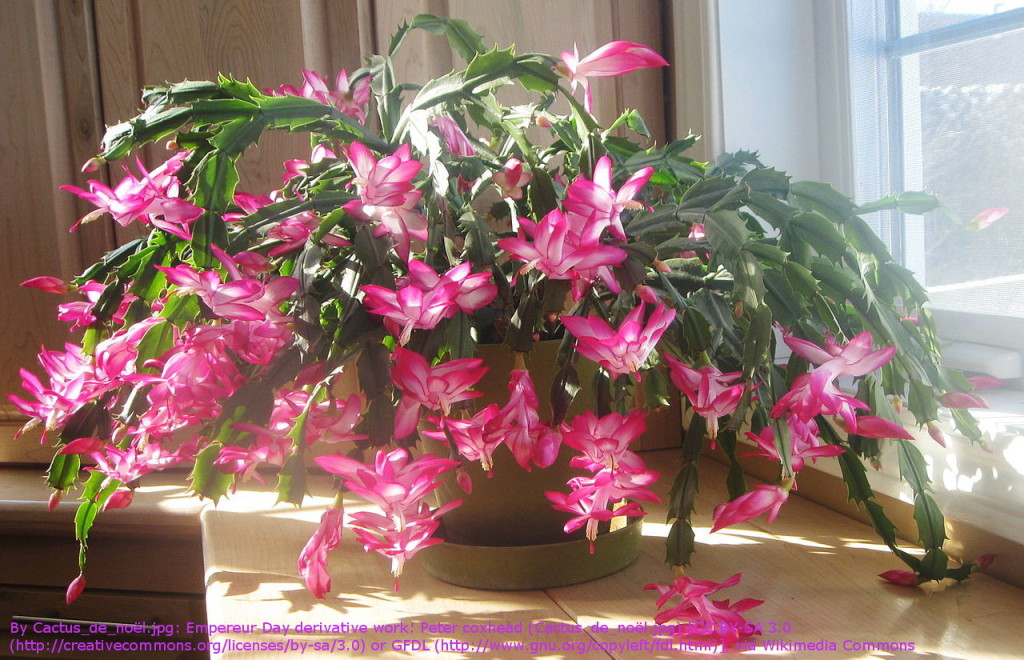

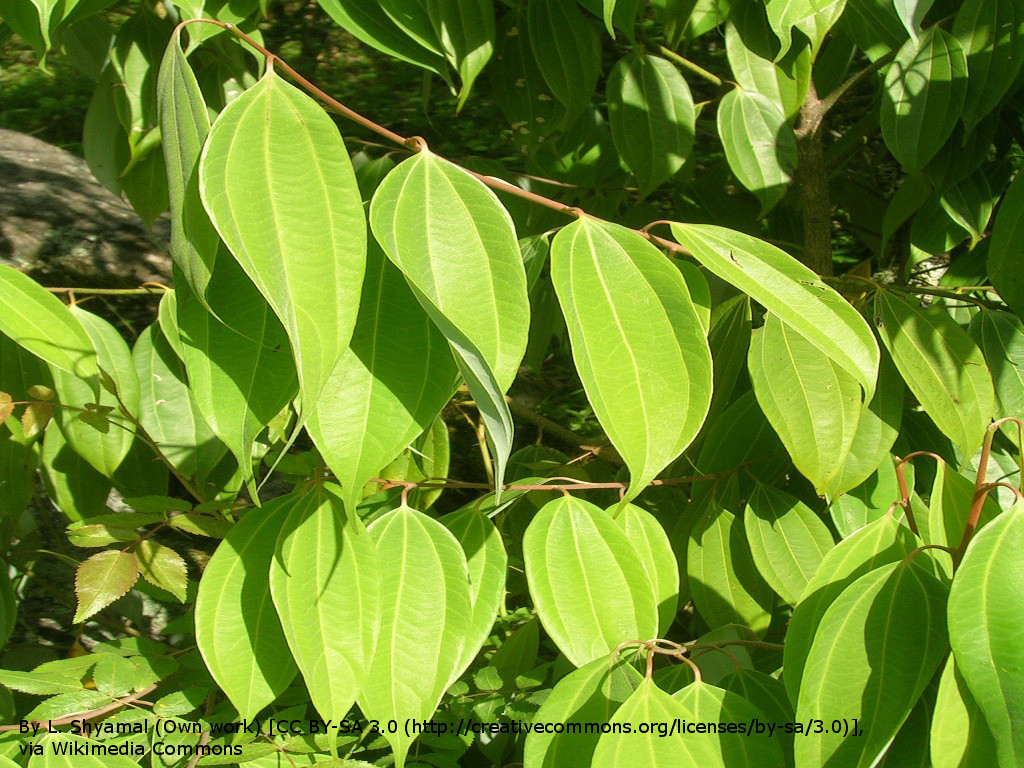



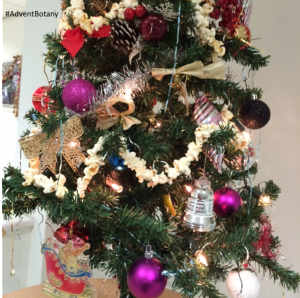




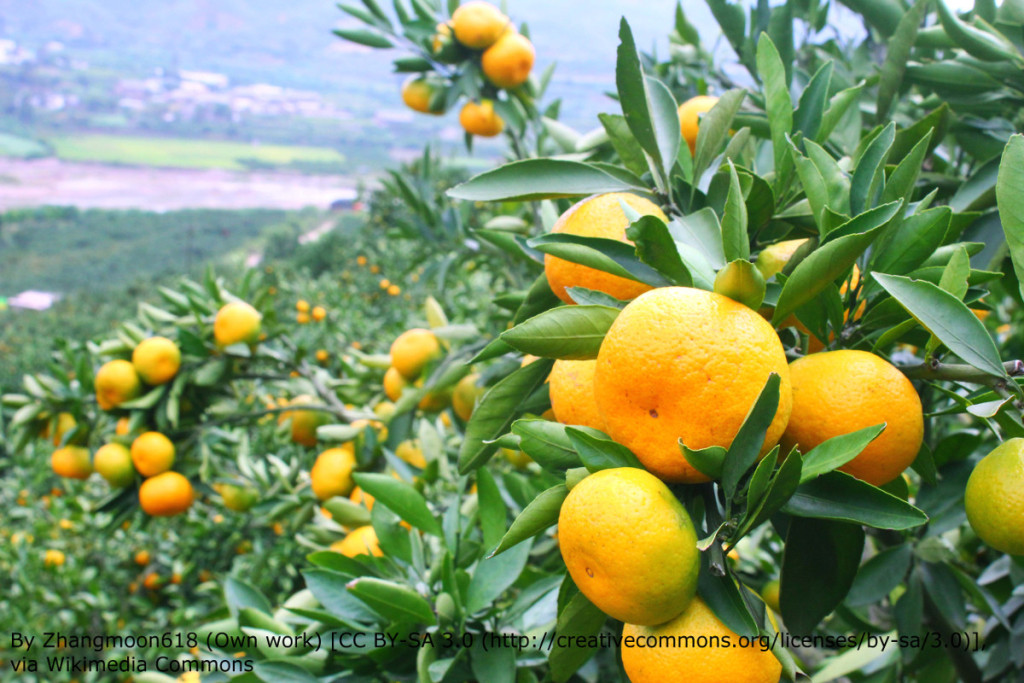
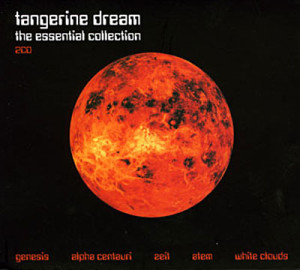
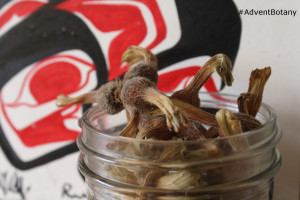
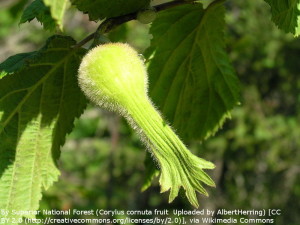
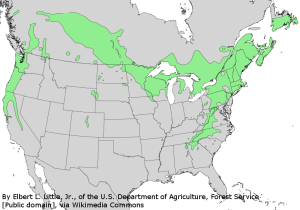

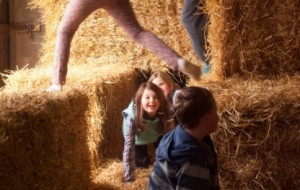







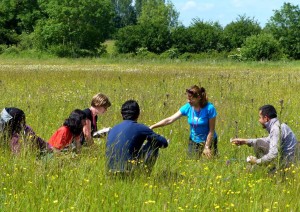
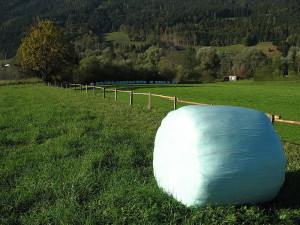


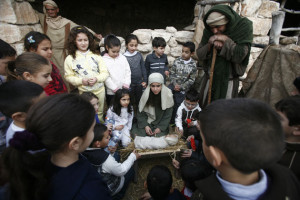


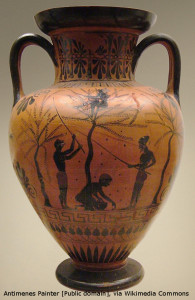
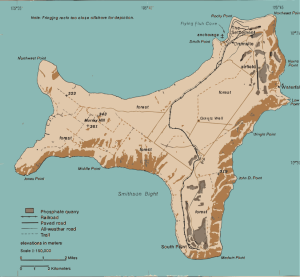

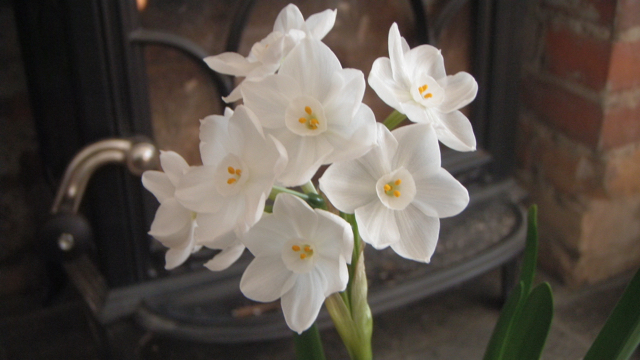
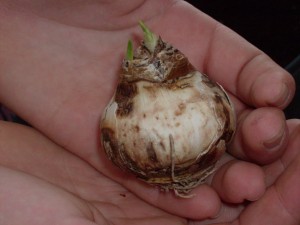
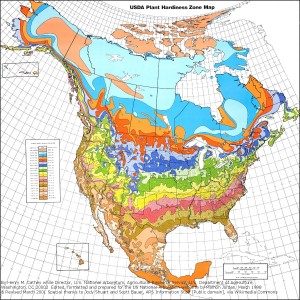
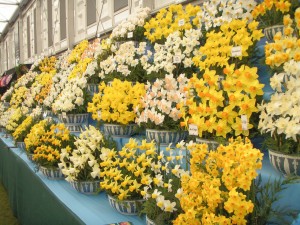
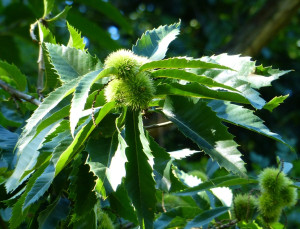
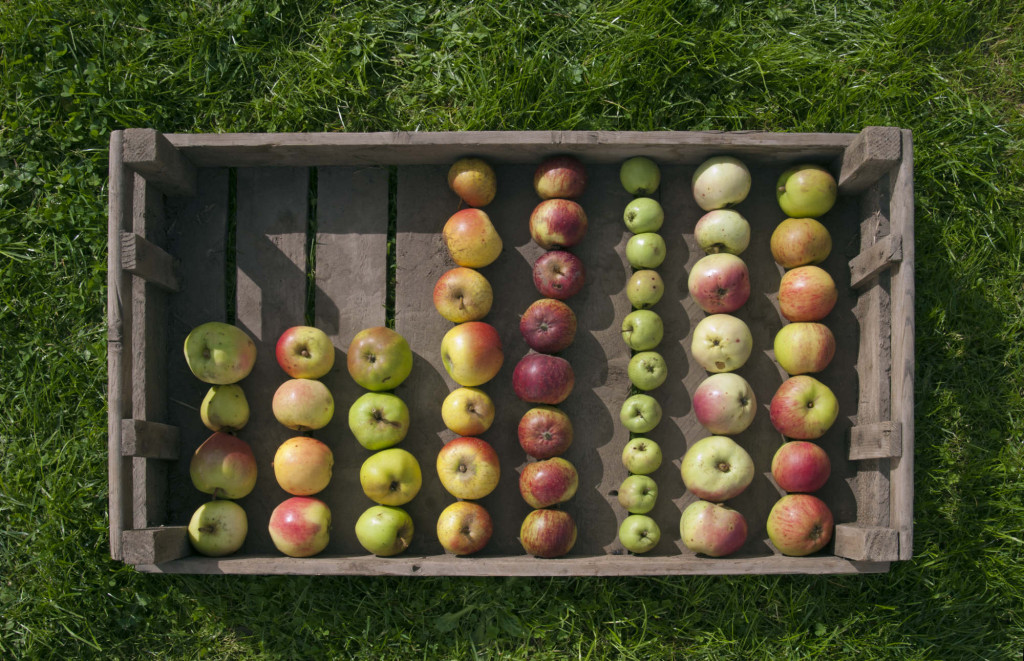
![[Frontispiece]](https://drmgoeswild.com/wp-content/uploads/2015/12/frontispiece-561x1024.jpg)
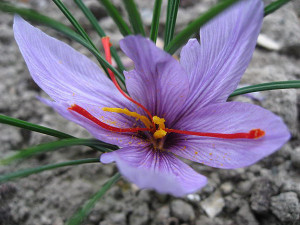









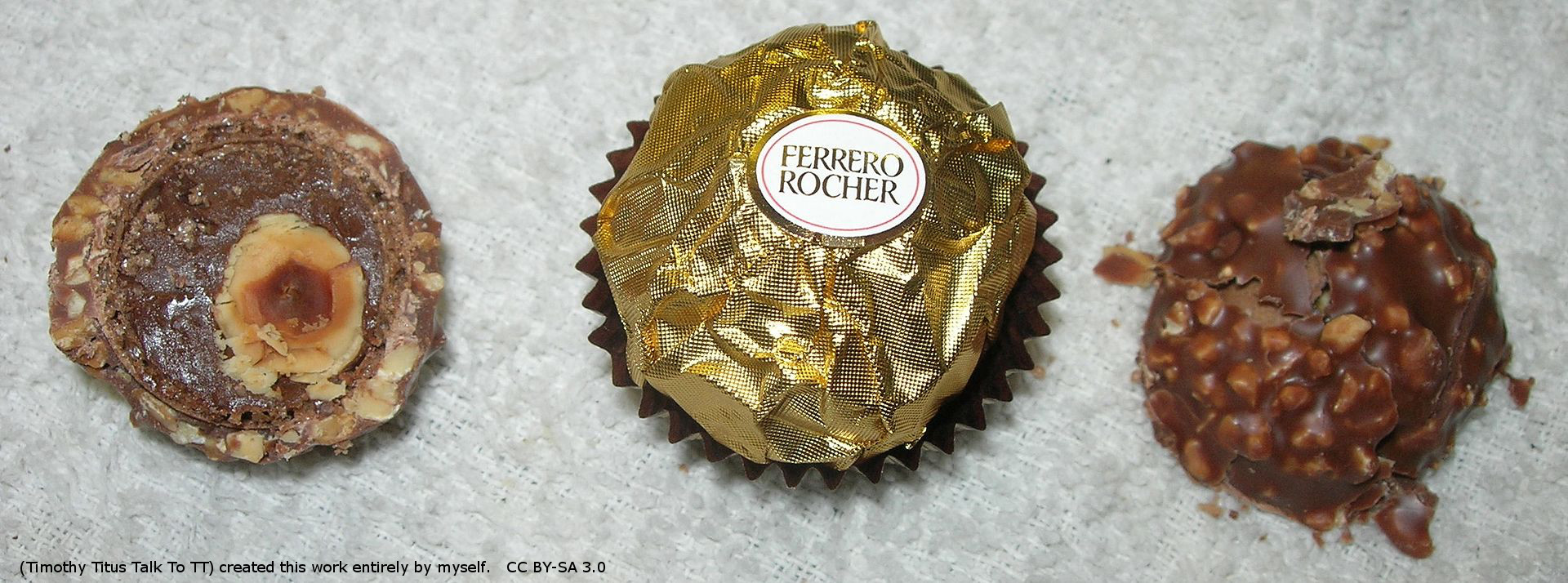


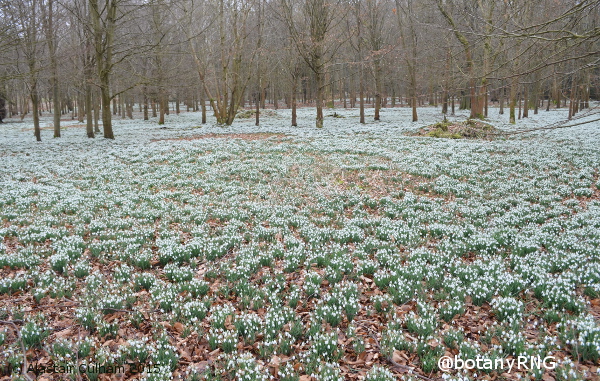
![By Meneerke bloem (Own work) [GFDL (http://www.gnu.org/copyleft/fdl.html) or CC BY-SA 3.0 (http://creativecommons.org/licenses/by-sa/3.0)], via Wikimedia Commons](http://blogs.reading.ac.uk/crg/files/2015/12/450px-Galanthus_reginae-olgae_clump2.jpg)
